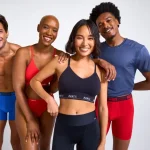By Eric Smith
Mike Joyce, PrimaLoft’s president and CEO, was understandably upbeat last week while making the media rounds in advance of the company’s latest technology, a synthetic insulation made from 100-percent recycled, biodegradable fibers.
The fibers of PrimaLoft Bio almost completely break down in a landfill or in the ocean within 365 days, yet the proprietary technology does not change the performance, look or feel of the garment.
This latest insulation reinforces PrimaLoft’s commitment to innovation, Joyce said, and it has the company’s top executive bullish on PrimaLoft Bio’s reception now, as news of the technology spreads, and especially in fall 2020 when Bio will be available for consumers.
“We think this is a game changer,” Joyce said. “This really moves the needle. Most of our brand partners are looking for lighter, faster, more breathable and thermal regulation—and all those are innovations—but this is a major breakthrough. PrimaLoft Bio dramatically reinforces our leadership position within the insulation category.”
Joyce’s travels last week brought him to Colorado where he sat down with SGB to discuss the story behind PrimaLoft’s latest technology, specifically how Bio—the first synthetic insulation of its kind—will benefit both the earth and the brand.
He said PrimaLoft developed Bio by looking through three “prisms,” just as it does with all new technologies. Only then could it clear the barrier of going to market.
“One, is the technology true to our brand, true to PrimaLoft? It’s true to us because of our sustainability history, because of our people and because sustainability matters to us,” Joyce said. “Two, is it distinct? There’s no doubt that this technology separates us. It is leading edge. It is first in the space for this innovation. And, three, is it compelling? Does it make sense? Can you tell this story? Will the consumer be able to understand it?
“True, distinct and compelling — I think that this technology checks the box on all three.”
Here is the rest of what Joyce shared with us about PrimaLoft Bio, what it means for the company’s ability to grow market share with existing brand partners while also scoring new ones, and what’s next for the brand as it seeks new innovation frontiers.
Can you quantify the investment that PrimaLoft made in PrimaLoft Bio in terms of bringing on talent, ramping up scientific research, contracting third-party testers, etc.? In the last four years, we’re approaching seven figures as an investment. For a company our size, that is quite a significant amount of investment. [As for new hires], we gang-tackle problems, so we have chemical engineers and fiber science professionals on staff that understand the polymerization process. We also have analytical chemists and manufacturing employees with a lot of experience. We tapped into those resources and used this specialization to achieve our goal. We also extended our expertise by hiring, or contracting, with other companies or people that may have a unique skill set. So it’s not just hiring people, it may be our bringing in consultants and other third-party experts.
What is PrimaLoft’s expected return on the investment in Bio in terms of growing revenue among existing brand partners as well as taking share by adding new ones? The technology will be a major revenue driver for us when it comes to organic growth and that includes a larger share of the market with our brand partners, or getting in more lines. What’s likely to happen is that our brand partners will create new lines of product to be able to make the claim of biodegradability. It also is going to be a magnet for new brands to come to us, because we’re going to have a technology that people want. We look for brands that we want to be associated with and where they sell.
It’s important for us and our brand partners that we maintain the premium position in the market. How we grow is very important, too. We’re not just going to grow anywhere. I also think we have a significant opportunity to use this technology through a licensing model. I think this technology, and the concept of taking a synthetic material and making it biodegradable. has significant applicability across a wide range of industries.
Does PrimaLoft Bio meet the demands of today’s consumer and your brand partners? And with this new technology, do you now expect those demands to grow? In 2012 we committed ourselves to focus on what got us to where we are today, and that’s material innovation. As a result, we have been prolific with new products in the last five years. We’re almost becoming the R&D arm of many of our brands because of our innovation. We exist only if we can help our brand partners differentiate, and we can help them with sell-through at retail. If we can’t do that, then we will not exist. It’s as simple as that.
When you’re a leading edge player, that’s good news, but it also means that you need to stay ahead of the curve. You need to always be leading. The law of diminishing utility says that when you come out with a great innovation or with something that satisfies a consumer need, after a short period of time that becomes normal and they begin looking for what else is new. That’s exactly what I’m anticipating will happen. We expect our brand partners will say, “This is great, but what do you have for next season, and the next season, and the next season?”
How important is the messaging of this new technology to ensure it doesn’t come across as corporate greenwashing, and can that be a delicate balance? The good news is that we’ve been at this for 30 years, and we have credibility in the b2b marketplace. People know how we do things. It’s as much about what you do as it is about how you do it and what kind of rigor are you putting yourself through.
From a B2B perspective, a lot of brands will come to us and say, “Well, if you guys say it’s the real deal, then it must be the real deal,” because they’ve worked with us for 30 years. It’s a good base to start off with, but then we add — and we feel this is important — that we do independent testing. We’re very particular around accuracy of anything we say to brands and to consumers.
I’ve heard the outdoor industry get criticized for a lack of innovation. How much does this technology help elevate what’s happening across the space? I don’t disagree with the comment about innovation, but I’ll dilute that comment a little bit by saying this: I think the outdoor industry can be pretty critical of each other. You can criticize your family, but don’t criticize somebody else’s. For example, the fashion industry is coming to the outdoor shows to do nothing other than to look at innovation in that segment. With the outdoor industry, if you take the logos off every jacket and you lay them down, they all look the same. And so the outdoor industry needs to go to the fashion shows and get inspired by how they execute and how they design. I think the sweet spot is somewhere between, and we’re getting there. Fashion is becoming more technical, and hopefully the outdoor market will become more stylish. Between those two polar opposites is where, I think, value is created. So I do think that there is innovation.
Does PrimaLoft Bio put competitors on notice to raise their game? I hope it does because good competition drives innovation. I hope it creates more intense competition, because it drives good business practices.
I think we’re going to put people on notice. There are very smart people in our industry, and they will jump on this, and it’s our job is to move their cheese and go and disrupt that technology. We celebrate when we disrupt our technology. We celebrate when we cannibalize ourselves. So as we come out with biodegradable fabrics, we’re going to be cannibalizing our line. And the reason that we celebrate that is because I’d rather cannibalize myself than have somebody else do it for me.
Does this development embolden PrimaLoft to continue pushing for new innovations, and if so, what’s next on the horizon? This has emboldened us. This has verified that the work we’ve done in the last five years was a worthy effort. We believe that we’re on a journey. We’re not a one-product company, but we think that this technology can certainly drive across the product lines. We think that we have significant opportunities to grow our revenue with this technology. This type of an innovation creates and spurs other innovations and other ideas about what else we can we do with this technology. We have a robust R&D pipeline, and it continues to push us for new innovations. We are as solid as we ever were with near-term, mid-term and long-term projects, so I think it’s a matter of, ‘You ain’t seen nothing yet.’
Photo courtesy PrimaLoft
[author] [author_image timthumb=’on’]https://s.gravatar.com/avatar/dec6c8d990a5a173d9ae43e334e44145?s=80[/author_image] [author_info]Eric Smith is Senior Business Editor at SGB Media. Reach him at eric@sgbonline.com or 303-578-7008. Follow on Twitter or connect on LinkedIn.[/author_info] [/author]
















